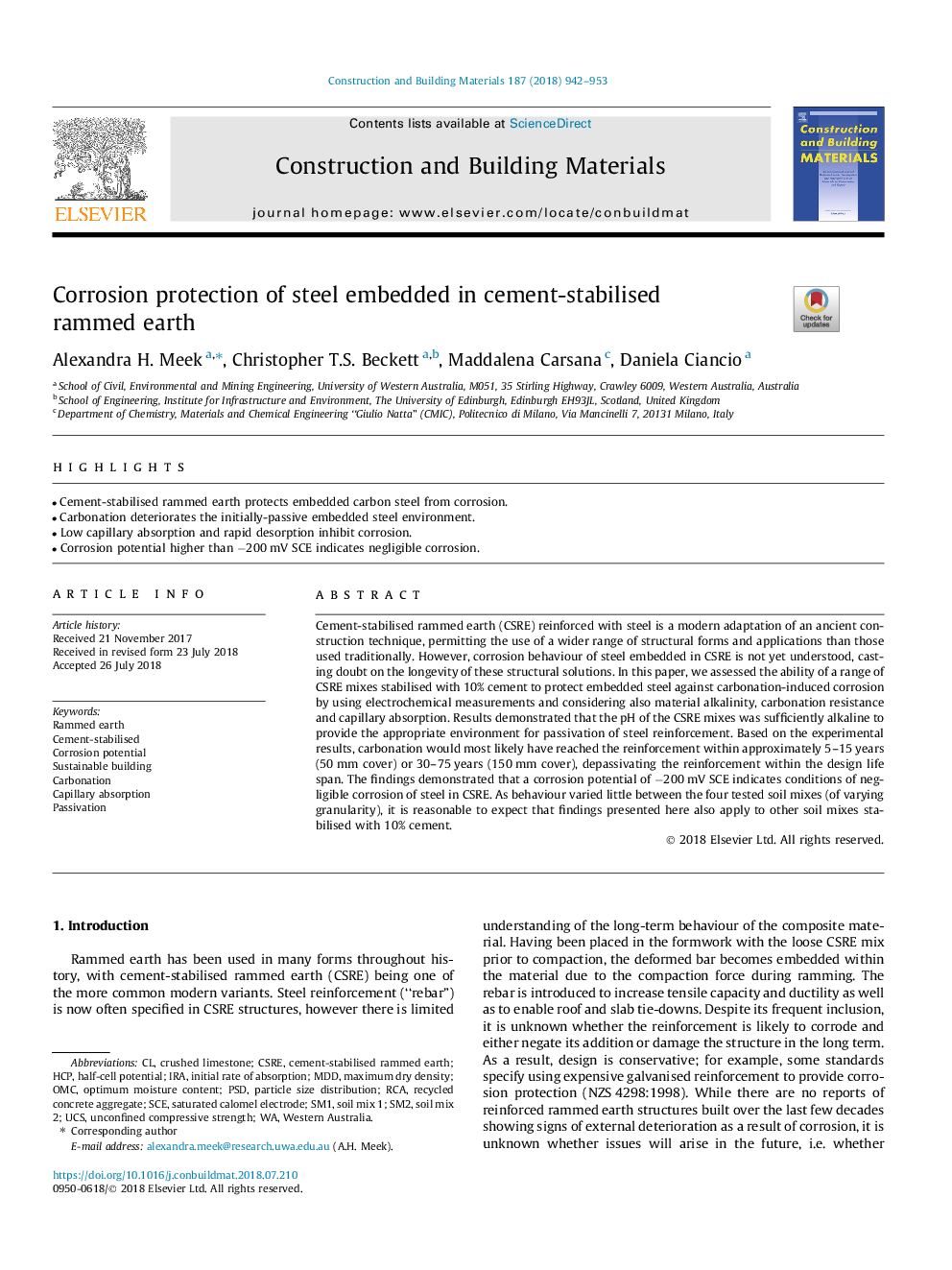| Article ID | Journal | Published Year | Pages | File Type |
|---|---|---|---|---|
| 6711602 | Construction and Building Materials | 2018 | 12 Pages |
Abstract
Cement-stabilised rammed earth (CSRE) reinforced with steel is a modern adaptation of an ancient construction technique, permitting the use of a wider range of structural forms and applications than those used traditionally. However, corrosion behaviour of steel embedded in CSRE is not yet understood, casting doubt on the longevity of these structural solutions. In this paper, we assessed the ability of a range of CSRE mixes stabilised with 10% cement to protect embedded steel against carbonation-induced corrosion by using electrochemical measurements and considering also material alkalinity, carbonation resistance and capillary absorption. Results demonstrated that the pH of the CSRE mixes was sufficiently alkaline to provide the appropriate environment for passivation of steel reinforcement. Based on the experimental results, carbonation would most likely have reached the reinforcement within approximately 5-15â¯years (50â¯mm cover) or 30-75â¯years (150â¯mm cover), depassivating the reinforcement within the design life span. The findings demonstrated that a corrosion potential of â200â¯mV SCE indicates conditions of negligible corrosion of steel in CSRE. As behaviour varied little between the four tested soil mixes (of varying granularity), it is reasonable to expect that findings presented here also apply to other soil mixes stabilised with 10% cement.
Keywords
CSREUCSRCASM1SM2OMCSCEIRAPSDHCPMDDUnconfined compressive strengthWestern AustraliaSaturated Calomel ElectrodeParticle size distributionCapillary absorptionrecycled concrete aggregateMaximum dry densityOptimum moisture contentPassivationRammed earthsustainable buildingCorrosion potentialHalf-cell potentialCarbonation
Related Topics
Physical Sciences and Engineering
Engineering
Civil and Structural Engineering
Authors
Alexandra H. Meek, Christopher T.S. Beckett, Maddalena Carsana, Daniela Ciancio,
